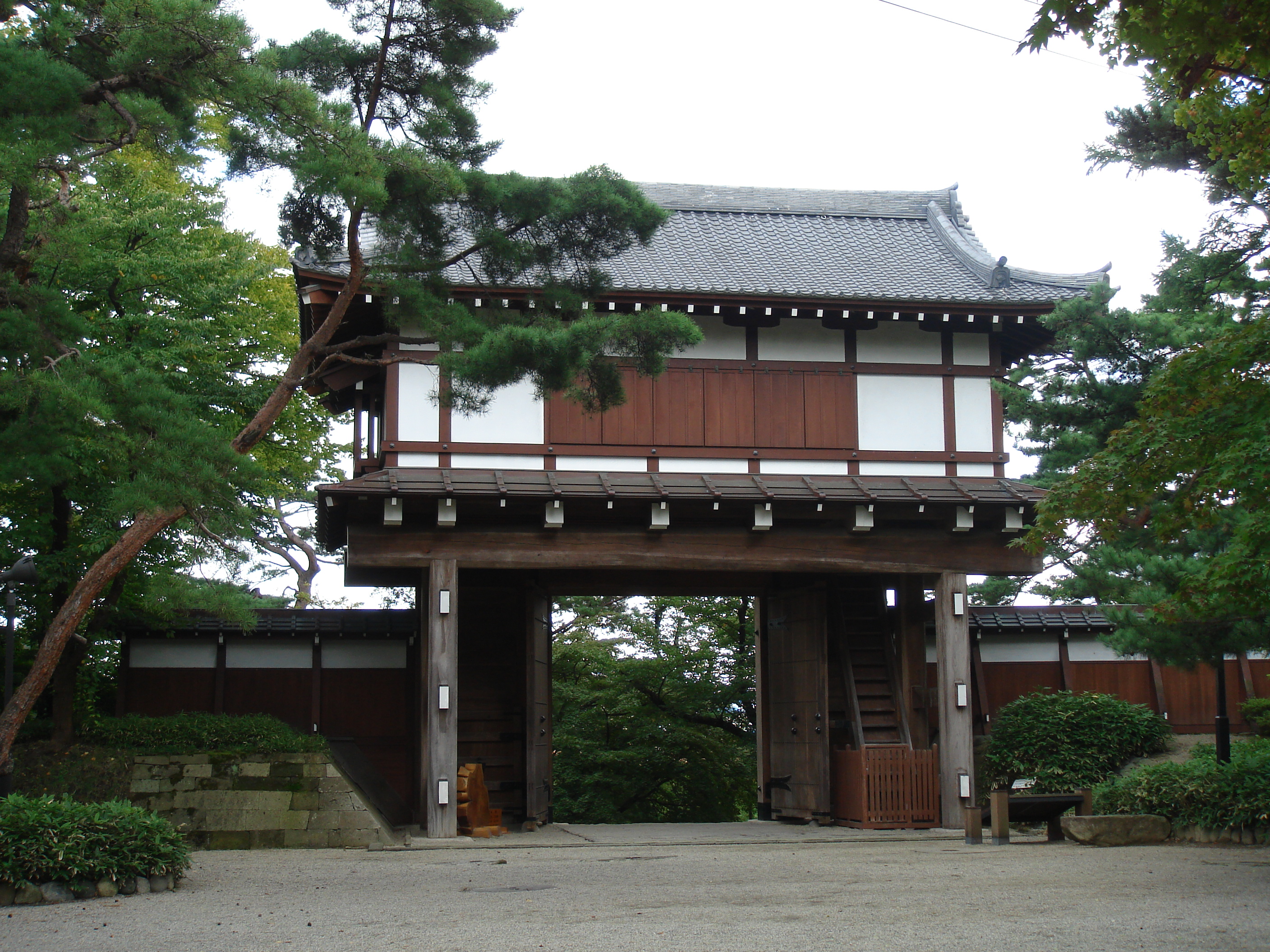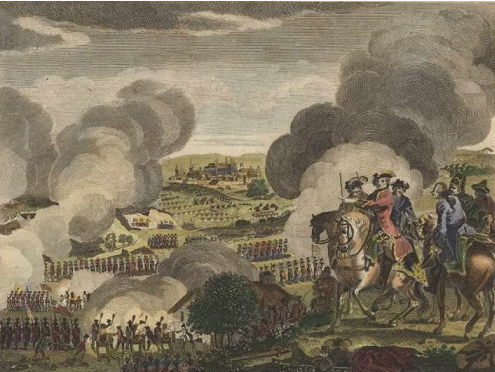|
Satake Yoshiharu
was the 7th '' daimyō'' of Kubota Domain in Dewa Province, Japan (modern-day Akita Prefecture), and then 25th hereditary chieftain of the Satake clan. His courtesy title A courtesy title is a title that does not have legal significance but rather is used through custom or courtesy, particularly, in the context of nobility, the titles used by children of members of the nobility (cf. substantive title). In some co ... was '' Ukyo-daifu'' and ''Jijū'' and his Court rank was Junior Fourth Rank, Lower Grade. Biography Satake Yoshiharu was the eldest son of Satake Yoshimichi of Iwasaki Domain and was posthumously adopted as heir to Satake Yoshimasa after the latter's untimely death (possibly due to poison) in 1753. He was received in formal audience by Shōgun Tokugawa Yoshimune in 1737, and his position as ''daimyō'' of Kubota was confirmed by Shōgun Tokugawa Ieshige late in 1753. He made his first visit to his domain in 1755. Kubota Domain continued to be ren ... [...More Info...] [...Related Items...] OR: [Wikipedia] [Google] [Baidu] |
Satake
Satake may refer to: *Satake clan, a Japanese samurai clan originally from Hitachi Province *Satake Corporation, a multinational agricultural equipment maker based in Hiroshima, Japan *Asteroid 8194 Satake *Ichirō Satake (1927–2014), Japanese mathematician **Satake isomorphism **Satake diagram *, Japanese women's basketball player *, Japanese sailor *, Japanese politician {{Disambiguation, surname Japanese-language surnames ... [...More Info...] [...Related Items...] OR: [Wikipedia] [Google] [Baidu] |
Satake Clan
The was a Japanese samurai clan that claimed descent from the Minamoto clan. Its first power base was in Hitachi Province. The clan was subdued by Minamoto no Yoritomo in the late 12th century, but later entered Yoritomo's service as vassals. In the Muromachi period, the Satake served as Governor (''shugo'') of Hitachi Province (today Ibaraki Prefecture), under the aegis of the Ashikaga shogunate. The clan sided with the Western Army during the Battle of Sekigahara, and was punished by Tokugawa Ieyasu, who moved it to a smaller territory in northern Dewa Province (northern Honshū) at the start of the Edo period. The Satake survived as lords (daimyō) of the Kubota Domain (also known as the Akita Domain). Over the course of the Edo period, two major branches of the Satake clan were established, one ruled the fief of Iwasaki, the other one the fief of Kubota-Shinden. During the Boshin War of 1868–69, the Satake were signatories to the pact that formed the Ōuetsu Reppan Dōm ... [...More Info...] [...Related Items...] OR: [Wikipedia] [Google] [Baidu] |
1757 Deaths
Events January–March * January 2 – Seven Years' War: The British Army, under the command of Robert Clive, captures Calcutta, India. * January 5 – Robert-François Damiens makes an unsuccessful assassination attempt on Louis XV of France, who is slightly wounded by the knife attack. On March 28 Damiens is publicly executed by burning and dismemberment, the last person in France to suffer this punishment. * January 12 – Koca Ragıp Pasha becomes the new Grand Vizier of the Ottoman Empire, and administers the office for seven years until his death in 1763. * February 1 – King Louis XV of France dismisses his two most influential advisers. His Secretary of State for War, the Comte d'Argenson and the Secretary of the Navy, Jean-Baptiste de Machault d'Arnouville, are both removed from office at the urging of the King's mistress, Madame de Pompadour. * February 2 – At Versailles in France, representatives of the Russian Empire and the ... [...More Info...] [...Related Items...] OR: [Wikipedia] [Google] [Baidu] |
1723 Births
Seventeen or 17 may refer to: *17 (number), the natural number following 16 and preceding 18 * one of the years 17 BC, AD 17, 1917, 2017 Literature Magazines * ''Seventeen'' (American magazine), an American magazine * ''Seventeen'' (Japanese magazine), a Japanese magazine Novels * ''Seventeen'' (Tarkington novel), a 1916 novel by Booth Tarkington *''Seventeen'' (''Sebuntiin''), a 1961 novel by Kenzaburō Ōe * ''Seventeen'' (Serafin novel), a 2004 novel by Shan Serafin Stage and screen Film * ''Seventeen'' (1916 film), an American silent comedy film *''Number Seventeen'', a 1932 film directed by Alfred Hitchcock * ''Seventeen'' (1940 film), an American comedy film *''Eric Soya's '17''' (Danish: ''Sytten''), a 1965 Danish comedy film * ''Seventeen'' (1985 film), a documentary film * ''17 Again'' (film), a 2009 film whose working title was ''17'' * ''Seventeen'' (2019 film), a Spanish drama film Television * ''Seventeen'' (TV drama), a 1994 UK dramatic short starring Christ ... [...More Info...] [...Related Items...] OR: [Wikipedia] [Google] [Baidu] |
Scrip Of Edo Period Japan
During the Edo period, feudal domains of Japan issued scrip called for use within the domain. This paper currency supplemented the coinage of the Tokugawa shogunate. Most scrip carried a face value in silver coinage, but gold and copper scrip also circulated. In addition, some scrip was marked for exchange in kind for a commodity such as rice. In addition to those issued by the domains, forms of paper money were also issued by rice brokers in Osaka and Edo. Originally used only as a representation of amounts of rice (subdivisions of ''koku'') owned by the scrip-holder and held in the Osaka or Edo merchants' storehouse, these scrips quickly came to be used as currency. Japan's first banknotes, called ''Yamada Hagaki'' (山田羽書), were issued around 1600 by Shinto priests also working as merchants in the Ise-Yamada (modern Mie Prefecture), in exchange for silver. Japan Currency Museum permanent exhibit. This was earlier than the first goldsmith notes issued in E ... [...More Info...] [...Related Items...] OR: [Wikipedia] [Google] [Baidu] |
Tokugawa Yoshimune
was the eighth ''shōgun'' of the Tokugawa shogunate of Japan, ruling from 1716 until his abdication in 1745. He was the son of Tokugawa Mitsusada, the grandson of Tokugawa Yorinobu, and the great-grandson of Tokugawa Ieyasu. Lineage Yoshimune was not the son of any former ''shōgun''. Rather, he was a member of a cadet branch of the Tokugawa clan. Tokugawa Ieyasu, the founder of the Tokugawa shogunate, well aware of the extinction of the Minamoto line in 1219, had realized that his direct descendants might die out, leaving the Tokugawa family at risk of extinction. Thus, while his son Tokugawa Hidetada was the second ''shōgun'', he selected three other sons to establish the ''gosanke,'' hereditary houses which would provide a ''shōgun'' if there were no male heir. The three ''gosanke'' were the Owari, Kii, and Mito branches. Yoshimune was from the branch of Kii. The founder of the Kii house was one of Tokugawa Ieyasu's sons, Tokugawa Yorinobu. Ieyasu appointed him ''daimyō ... [...More Info...] [...Related Items...] OR: [Wikipedia] [Google] [Baidu] |
Shōgun
, officially , was the title of the military dictators of Japan during most of the period spanning from 1185 to 1868. Nominally appointed by the Emperor, shoguns were usually the de facto rulers of the country, though during part of the Kamakura period, shoguns were themselves figureheads, with real power in hands of the Shikken of the Hōjō clan. The office of shogun was in practice hereditary, though over the course of the history of Japan several different clans held the position. The title was originally held by military commanders during Heian period in the eighth and ninth centuries. When Minamoto no Yoritomo gained political ascendency over Japan in 1185, the title was revived to regularize his position, making him the first shogun in the usually understood sense. The shogun's officials were collectively referred to as the ; they were the ones who carried out the actual duties of administration, while the Imperial court retained only nominal authority.Beasley, William G ... [...More Info...] [...Related Items...] OR: [Wikipedia] [Google] [Baidu] |
List Of Japanese Court Ranks, Positions And Hereditary Titles
The court ranks of Japan, also known in Japanese as ''ikai'' (位階), are indications of an individual's court rank in Japan based on the system of the state. ''Ikai'' as a system was originally used in the Ritsuryo system, which was the political administration system used in ancient China, and the indication of the rank of bureaucrats and officials in countries that inherited (class system). Currently, the Japanese court ranks and titles are now one of the types of honours conferred to those who have held government posts for a long time and to those who have made distinguished achievements. In recent times, most appointments, if not all, are offered posthumously. A recent recipient of such a court rank is the late former prime minister Shinzo Abe Shinzo Abe ( ; ja, 安倍 晋三, Hepburn romanization, Hepburn: , ; 21 September 1954 – 8 July 2022) was a Japanese politician who served as Prime Minister of Japan and President of the Liberal Democratic Party (Japan), Pres ... [...More Info...] [...Related Items...] OR: [Wikipedia] [Google] [Baidu] |
Kokushi (officials)
were provincial officials in Classical Japan. They were nobles sent from the central government in Kyoto to oversee a province, a system that was established as part of the Taika Reform in 645, and enacted by the ''Ritsuryō'' system. There were four classes of ''kokushi'', from the highest to the lowest: ''Kami'' (守), ''Suke'' (介), ''Jō'' (掾), and ''Sakan'' (目). In the Middle Ages, an acting governor called ''mokudai'', the ''daikan'' of the ''kokushi'', took over the local government of the province, while the ''kokushi'' returned to the capital to take on a supervising role. History The oldest reference to the term ''kokushi'' appears on the Seventeen-article constitution from 604. As part of the Taika Reform in 645, a new system of provincial government was established, marking the beginning of the ''kokushi''. Before this, the governors were called ''mikotomochi'' (宰 or 使者). This term was replaced with the ''kanji'' characters 国 (province) and 司 (governo ... [...More Info...] [...Related Items...] OR: [Wikipedia] [Google] [Baidu] |
Courtesy Title
A courtesy title is a title that does not have legal significance but rather is used through custom or courtesy, particularly, in the context of nobility, the titles used by children of members of the nobility (cf. substantive title). In some contexts, ''courtesy title'' is used to mean the more general concept of a title or honorific such as Mr., Mrs., Ms., Dr., Miss, Sir, and Madam. Europe In Europe, including France, many titles are not substantive titles but remain ''titres de courtoisie'', and, as such, are adopted unilaterally. When done by a genuine member of the ''noblesse d'épée'' the custom was tolerated in French society. A common practice is ''title declension'', when cadet males of noble families, especially landed aristocracy, may assume a lower courtesy title than that legally borne by the head of their family, even though lacking a titled ''seigneury'' themselves. For example, the eldest son of the ''Duke of Paris'' (substantive title) may be called ''Marq ... [...More Info...] [...Related Items...] OR: [Wikipedia] [Google] [Baidu] |
Akita Prefecture
is a Prefectures of Japan, prefecture of Japan located in the Tōhoku region of Honshu.Nussbaum, Louis-Frédéric. (2005). "Provinces and prefectures" in ; "Tōhoku" in . Its population is approximately 966,000 (as of 1 October 2019) and its geographic area is 11,637 Square kilometre, km2 (4,493 sq mi). Akita Prefecture is bordered by Aomori Prefecture to the north, Iwate Prefecture to the east, Miyagi Prefecture to the southeast, and Yamagata Prefecture to the south. Akita, Akita, Akita is the capital and largest city of Akita Prefecture. Other major cities include Yokote, Akita, Yokote, Daisen, Akita, Daisen, and Yurihonjō. Akita Prefecture is located on the coast of the Sea of Japan and extends east to the Ōu Mountains, the longest mountain range in Japan, at the border with Iwate Prefecture. Akita Prefecture formed the northern half of the historic Dewa Province with Yamagata Prefecture. History The region of Akita was created from the ancient provinces of Dewa Provi ... [...More Info...] [...Related Items...] OR: [Wikipedia] [Google] [Baidu] |




